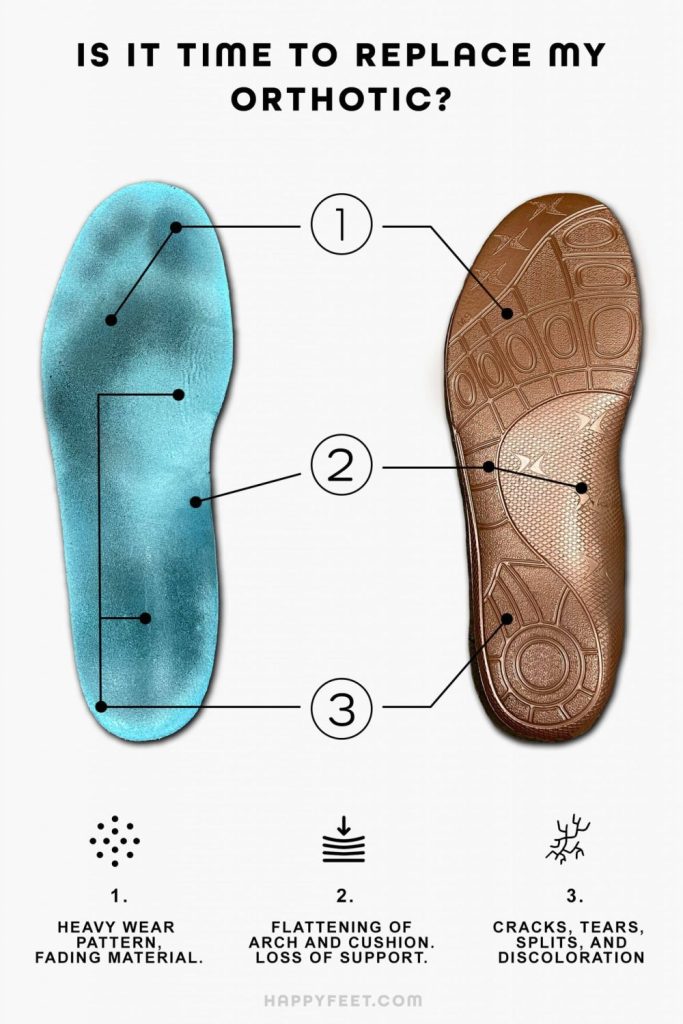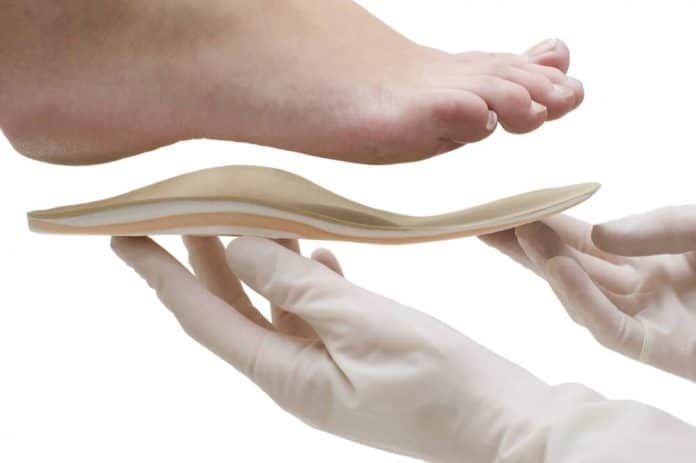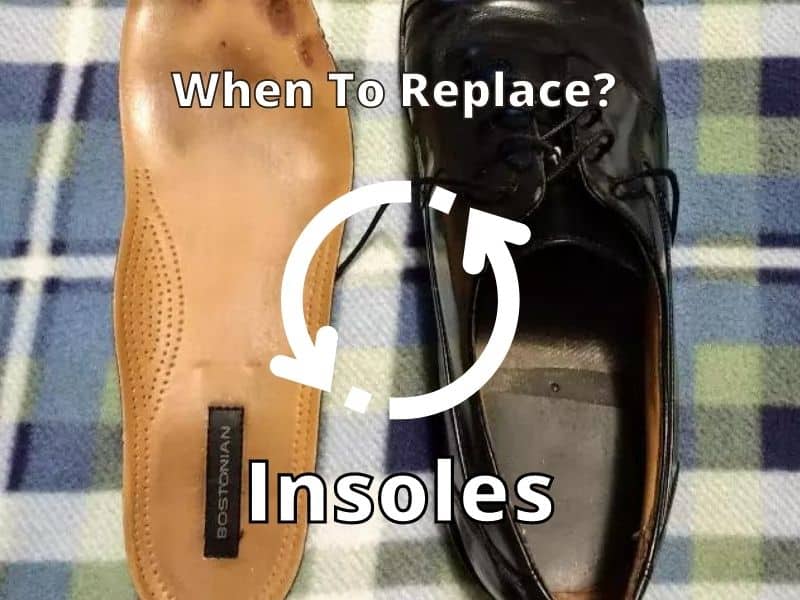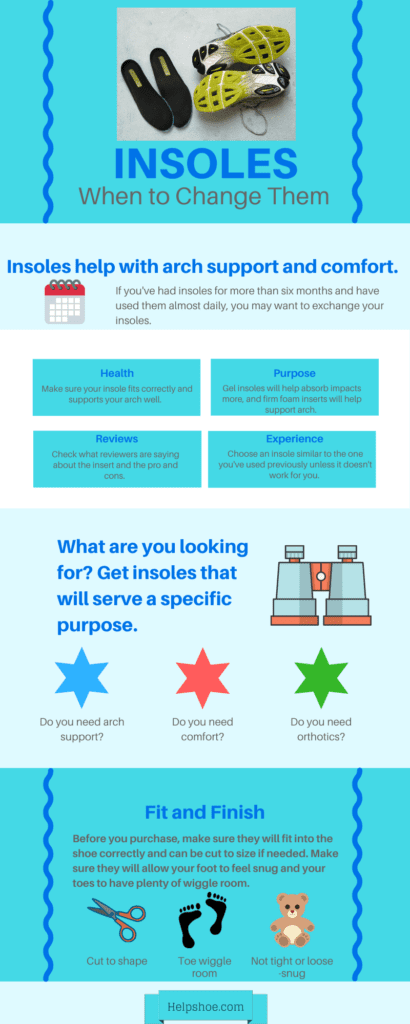Are you wondering how often you should change your insoles? It’s a common question that many people have, and in this article, we’ll provide you with some helpful insights.
The lifespan of your insoles may vary depending on several factors, such as how frequently you wear them and the activities you engage in.
However, some general guidelines can help you determine when it’s time for a fresh pair. Understanding the signs and considering your needs can ensure optimal foot comfort and support.
So, let’s find out how often you should switch out those trusty insoles!

Signs it’s time to change your insoles
Visible wear and tear
One of the clear signs that it’s time to change your insoles is when you can see visible wear and tear. Over time, the constant pressure and movement from walking or running can cause the insoles to break down. This might manifest as cracks, holes, or general deterioration. If you notice any of these signs on your insoles, it’s a good indication that they are no longer providing the necessary support and should be replaced.
Loss of cushioning or support
Insoles are designed to cushion and support your feet, absorbing shock and reducing pressure on sensitive areas. However, over time, the cushioning properties of the insoles can diminish. You may notice that your feet feel less supported or that the insoles no longer provide the cushioning they once did. This can lead to discomfort, pain, and even foot conditions like plantar fasciitis. If your insoles no longer provide the necessary cushioning or support, it’s time for a replacement.
Unpleasant odor
If you constantly battle with a foul odor from your shoes, it may result from the insoles. Over time, bacteria and sweat can accumulate on the insoles, creating an unpleasant smell. Even with regular washing, the odor may persist, indicating that the insoles have reached the end of their lifespan. While cleaning can temporarily address the smell, replacing the insoles altogether is a good idea if it persists.
Excessive foot pain or discomfort
Perhaps the most obvious sign that your insoles need to be changed is if you experience excessive foot pain or discomfort. If your feet ache after minimal time on your feet or experience sharp pains in certain areas, your current insoles are likely no longer providing the necessary support. Ignoring this discomfort can lead to more severe foot problems, so it’s essential to address the issue promptly by replacing your insoles.
Factors that affect insole lifespan
Frequency of use
How often you use your insoles will significantly affect their lifespan. If you wear them daily for extended periods, they will naturally wear down faster than if only used occasionally. Those who engage in high-impact activities, such as running or playing sports, will also experience faster wear and tear on their insoles due to the increased stress put on their feet.
Type of Activity
The type of activity you engage in while wearing your insoles can contribute to their lifespan. If you primarily use your insoles for walking or casual daily activities, they may last longer than activities involving repetitive movements or high impact. Running, jumping, or participating in activities that put more stress on your feet can wear down the insoles more quickly.
Quality of insoles
The quality of the insoles themselves can significantly impact their lifespan. Insoles made from high-quality materials designed specifically for durability can last longer than cheaper, lower-quality options. While they may be pricier initially, investing in higher-quality insoles can save you money in the long run as you won’t have to replace them as frequently.
Individual foot characteristics
Each individual’s foot characteristics, such as arch type, pronation, and shape, can influence how quickly insoles wear out. For example, those with flat feet or high arches may put more pressure on specific areas of the insole, causing them to wear down faster.
Understanding your foot characteristics and selecting insoles that cater to your specific needs can help extend their lifespan.
Guidelines for different types of insoles
Standard cushioned insoles
Standard cushioned insoles are famous for individuals seeking essential support and comfort. These insoles typically provide moderate cushioning and are suitable for everyday activities. If you have been using standard cushioned insoles, replacing them every 6 to 12 months is generally recommended, depending on your usage. Pay attention to signs of wear and tear, loss of support, or discomfort to determine if it’s time for a replacement.
Orthotic insoles
Orthotic insoles are designed to provide additional support and correction for specific foot conditions or biomechanical issues. These insoles may be prescribed by a healthcare professional or purchased to address individual needs. The lifespan of orthotic insoles can vary depending on the materials used and the severity of the foot condition they are addressing. It’s best to follow the guidance provided by your healthcare professional or the manufacturer to determine when these insoles should be replaced.
Heel inserts
Heel inserts are specifically designed to cushion and support the heel area. They can be helpful for individuals experiencing heel pain or those who spend much time on their feet. As with other insoles, the lifespan of heel inserts will depend on usage, the quality of the materials, and signs of wear and tear. Replace them when you notice a loss of cushioning or support or if discomfort arises.
Gel or silicone insoles
Gel or silicone insoles are known for their excellent shock absorption properties and ability to provide cushioning. These insoles are often recommended for individuals with specific foot conditions or those seeking added comfort. The lifespan of gel or silicone insoles can vary, but they generally last around 8 to 12 months with regular use. Monitor them for any visible signs of wear or loss of cushioning to determine if replacement is needed.
General recommendations for insole replacement
Every six months to 1 year
As a general guideline, replacing your insoles every six months to 1 year is commonly recommended, depending on their usage and the type of insole. Regularly observing the condition of your insoles and evaluating their performance can help determine when it’s time for a replacement.
As soon as signs of wear appear
When signs of wear and tear become visible, such as cracks, holes, or deterioration, replacing your insoles as soon as possible is essential. Using worn-out insoles can lead to discomfort, increased foot pain, and potential foot conditions.
When discomfort or pain arises
If you begin to experience discomfort, pain, or new foot symptoms while wearing your insoles, it’s a good indication that they may no longer be providing the necessary support. Addressing this discomfort by replacing your insoles can help alleviate these symptoms and prevent further foot issues.
When the smell persists despite cleaning.
If you’ve tried cleaning your insoles to address an unpleasant odor, but the smell persists, it’s likely time for a replacement. Lingering odors can indicate bacteria buildup within the insoles that cleaning alone cannot eliminate.
Maintaining insoles for longevity
Cleaning and drying regularly
Regularly cleaning your insoles is essential to maintain their longevity. Follow the manufacturer’s guidelines for cleaning or use warm, soapy water to wash away dirt and sweat. After cleaning, thoroughly dry them before reinserting them into your shoes. Damp insoles can promote bacterial growth and lead to unpleasant odors.
Using foot powder or deodorizer
Use foot powder or a deodorizing spray to combat odor and keep your insoles fresh. These products can help absorb moisture and neutralize odors, prolonging the lifespan of your insoles. Make sure to follow the instructions provided by the product manufacturer for the best results.
Rotating between multiple pairs
To extend the lifespan of your insoles, it’s recommended to rotate between multiple pairs. This allows each pair time to dry out ultimately between uses, reducing the chance of bacterial growth and odor. Rotating also distributes the wear and tear evenly across your insoles, prolonging their lifespan.
Storing in a cool, dry place
Proper storage of your insoles is crucial to maintain their quality. Avoid exposing them to excessive heat or moisture, which can cause the materials to degrade more quickly. Store them in a cool, dry place when not in use to protect them from environmental factors that can impact their lifespan.
Considering individual needs and preferences
Consulting a healthcare professional
If you have specific foot conditions or concerns, it’s always wise to consult a healthcare professional. They can provide personalized guidance on the best insoles for your needs and help determine the ideal replacement frequency based on your circumstances.
Taking personal comfort into account
Ultimately, your comfort and well-being should be the primary consideration when replacing your insoles. Pay attention to any discomfort, pain, or changes in foot condition while using your current insoles. If you feel they no longer provide the support and cushioning you require, trust your instincts and replace them accordingly.
Adjusting replacement frequency as needed
While general guidelines exist for insole replacement, it’s important to note that everyone’s feet and usage patterns are unique. Some individuals may require more frequent replacements due to intense physical activity or specific foot conditions, while others may find that their insoles last longer. Adjust the replacement frequency based on your experience and your feet’ feedback.
Conclusion
Knowing when to change your insoles is crucial for maintaining foot health and comfort. By recognizing the signs of wear and tear, loss of support or cushioning, unpleasant odor, and excessive foot pain or discomfort, you can take proactive steps to replace your insoles when necessary.
Considering factors such as usage frequency, activity type, insole quality, and individual foot characteristics can help determine the lifespan of your insoles. You can prolong their longevity by following general recommendations and maintaining your insoles through regular cleaning, using foot powder, rotating between pairs, and proper storage.
Lastly, it’s essential to prioritize your needs, consult a healthcare professional as needed, and adjust the replacement frequency based on personal comfort. With these guidelines in mind, you’ll be on your way to enjoying optimal foot support and comfort with fresh, functional insoles.










































